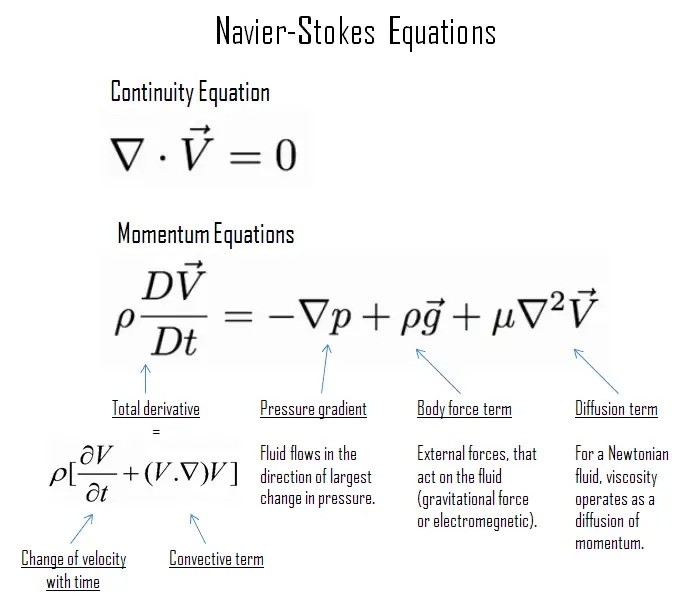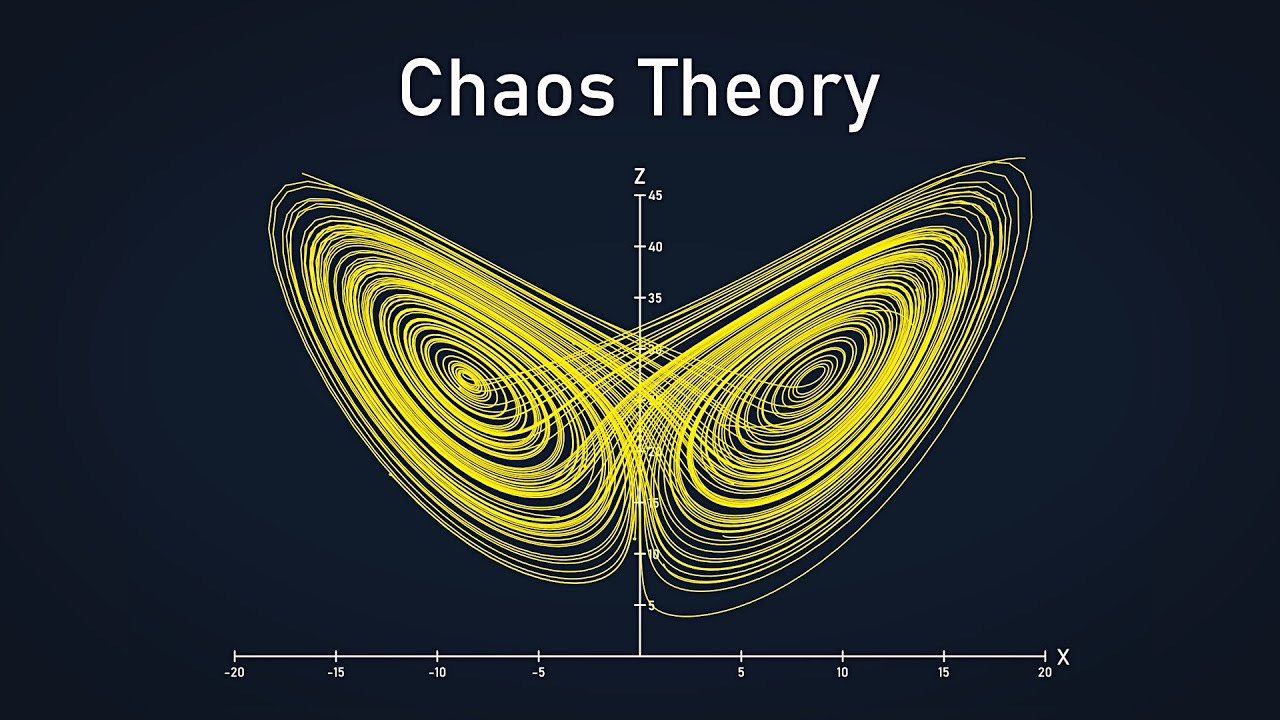All posts in this series:
1. Aerodynamics is beautiful and strange. Wakes especially so
2. A not-short-enough introduction to wakes and drag
3. Big wakes and small wakes
4. How should we think about shear layers?
5. My mental model of wakes
We don't understand aerodynamics?
This is the first of a series of posts on the science of wakes (the swirling air trailing behind a vehicle like a car, truck, etc). But let's start by talking about aerodynamics in general.
In February 2020, Scientific American published an article titled No One Can Explain Why Planes Stay in the Air (subtitle: Do recent explanations solve the mysteries of aerodynamic lift?)1
If you ask me, the title is clickbait—aerodynamics explains how planes fly. However, the explanation is more convoluted than the explanations we see in other areas of "everyday physics". Aerodynamics is a field where we often can't just say "X causes Y". Instead, we can say something like "phenomena X, Y, and Z reinforce each other in a way that satisfies the laws of physics of moving air". X causes Y, but Y causes X, too. And the balance between them can be hard to predict.
To use an analogy: when we talk about gravity, we might say an apple falls to the earth. But as you may remember from high school physics, technically the apple and the earth both move towards each other. But since the earth is so much bigger than the apple, its movement is vanishingly small, so we ignore it. Aerodynamics is a field where the 'apple' and the 'earth' are the same size—the earth causes the apple to move, but the apple causes the earth to move too. (And for this analogy to really work, in aerodynamics it's often like there's a dozen apples, to boot.)
We can explain how planes fly, but there's still a hint of truth to that clickbaity title: aerodynamics is complicated and chaotic. The fact that Scientific American could publish an article with that title—a mere few years ago—should tell you aerodynamics is a field where there’s still things we don’t fully understand.
Let me highlight this point with two other examples.
First, there's the Millennium Prize problems. In the year 2000, the Clay Mathematics Institute offered a $1 million prize to the first person to solve each of seven important mathematical problems. To date, only one of those has been solved. One of the remaining unsolved problems is known as the "Navier–Stokes existence and smoothness" problem. The problem relates to better understanding the Navier-Stokes equations2, a collection of equations which describe the motion of fluid in space. The Navier-Stokes equations are the main equations of aerodynamics, and there are things we still don't understand mathematically about how they behave.

A second example: even if you know nothing about aerodynamics, you may be familiar with the term "chaos theory", and that field's famous thought experiment: can a butterfly flapping its wings cause a hurricane? In popular culture, this meme refers generally to the idea that the tiniest change can cause our lives to turn out completely differently. But the choice of metaphor isn't an accident.
Edward Lorenz, the scientist whom Nature calls "the father of chaos theory", was studying weather prediction when he wrote his "epoch-making" paper on chaos. Weather prediction and aerodynamics are closely related—the same laws that describe the way air flows around our cars also describe the large-scale motion of air through our atmosphere. Lorenz's paper, "Deterministic Nonperiodic Flow", has been cited over 28,000 times3.

These three examples summarize the chaotic weirdness that is aerodynamics. To recap:
A recent popular science article suggested we only sort-of understand how planes fly
There's an outstanding $1 million prize for anyone who can further our mathematical understanding of the laws of fluid flow
The field of chaos theory was more-or-less founded by a guy studying fluid flow (weather)
I’ve always thought there's a certain beauty in how these outstanding questions fit together. At the purely mathematical, abstract end of the spectrum—what are the properties of the Navier-Stokes equations?—we don't understand fluid flow as well as we'd like to. And at the complete other end of the spectrum—the concrete, everyday world of why do planes stay in the air?—we also have trouble understanding and explaining fluid flow.
We really don't understand wakes
Before wrapping up, let's briefly introduce the main topic of future posts in this series, and perhaps the hardest-to-understand part of this hard-to-understand field: wakes.
Simply put, a wake is the swirling air trailing behind a moving object such as a car or truck. (A more complete description of what a wake is will be coming in the next post.) If Scientific American thought aerodynamicists don't understand airplane wings, well, wakes are even harder to comprehend. The air flowing around a wing is mostly smooth and predictable, while wakes are characterized by high levels of chaos.

My favorite aero textbook, Understanding Aerodynamics by Doug McLean, has about 5 pages of discussions about wakes in slightly over 500 pages of text4. Even though roughly a third of aerodynamic drag on cars happens at the back of the car where the wake is5, wakes are something of an ignored stepchild of aerodynamics.
At my last job, I spent much of my time designing aerodynamic improvements for the tail end of cars and trucks. In other words, I was thinking about how wakes work.
The more projects I worked on, the more I realized nobody really knows what they're talking about here (myself included). It might have sounded like someone was giving an explanation, but they were really just waving their hands around and mumbling something about "shear layers", "base pressure", or "closing the wake". In the years since, I've looked to textbooks and papers to try to learn more about wakes, but I've often found them to be lacking as well.
To some extent, we'll always struggle to understand wakes due to their chaotic nature. Sometimes a new design we test in the wind tunnel will be (aerodynamically) worse than another and no one, not even the world's best aerodynamicist, will be able to tell you exactly why.
So aerodynamics as a whole still hasn't completely figured out wakes. The point being: I don't think it's that crazy to think some random passionate blogger can write a few essays about wakes that are (hopefully) better than just about anything else you can read out there.
I think my field can do a better job of thinking clearly about how wakes 'work'. In the following essays, I'll share the mental models I've built while studying wakes. We'll discuss a number of papers and textbooks and I'll tell you what they get right and what, in my opinion, they sometimes get wrong.
I'm only human and I can't read every new paper out there. I've made a good-faith effort to find out whether other people have written up these ideas already6. Other sources touch on similar ideas, and I'll give credit where it's due, but I haven't found anything that completely discouraged me from wanting to write up my own thoughts7.
So, if you're interested, stick around. Here's a summary of what to expect from upcoming posts:
A general introduction to wakes (and drag)
Do we want to make the wake smaller, or bigger?
How do we think about shear layers?
And to wrap up, a general summary of my intuitions on wakes
References:
Duell, Edward G., and A. R. George. "Experimental study of a ground vehicle body unsteady near wake." SAE transactions (1999): 1589-1602.
McLean, Doug. Understanding aerodynamics: arguing from the real physics. John Wiley & Sons, 2012.
Schuetz, Thomas Christian. Aerodynamics of road vehicles. Sae International, 2015.
And in May 2024, The Atlantic published "No One Really Understands Clouds". Though, to be fair, that's more of a struggle to understand droplet physics/moisture than a struggle to understand the aerodynamics of clouds.
What do I mean by saying we want to "better understand" them? It's complicated and math-y. And to be honest, it doesn't necessarily affect our ability to use the Navier-Stokes equations to describe how fluids move. I just think it's at least a little suspicious that there are things we still don't understand about these equations at the same time that we have trouble understanding aerodynamic explanations...
Mainly sections 5.3 and 6.1.7. Obviously there are many other mentions of wakes throughout the book, but not so much focused discussion.
See, for example, the Introduction section of Duell and George (1999), a paper I’ll talk more about in future posts.
Especially of note is W.H. Hucho's Bluff Body Aerodynamics, a German textbook (Aerodynamik der stumpfen Körper) that's never been translated to English. I scrolled through a PDF copy, looking at the pictures and using Google Translate on a few sections that seemed relevant. But due to the language barrier I wasn't able to learn much from it.
There are a few reasons for this.
First, I haven't found any one paper/textbook that puts all the pieces together in a way that I love.
Second, I think I can do a better job at making these ideas accessible. First, because academic papers heavily use industry jargon and second, because papers often consist of a small discussion of theory attached to the end of a long discussion of how their one particular experiment was run. On the other hand, I can focus solely on providing a clear and interesting explanation of the big picture.
Third, as mentioned above, even some well-regarded aerodynamics textbooks don't go into the details on wakes.


That brings me 10-15 years back during my engineering degree. I'll avidly read the rest !
Ooh, looking forward to it. As a kid I learned that the pressure was lower on top of the wing so it generated “lift”. Then I remember hearing “wellllll, it’s not as a simple as that!” and i have heard from many folks who think it is simply explained. I should go read the SciAm article. But I’m also interested in the physics of sailboats. I sail and I’m really confused about the forces at play. Do we also not really understand how sailboats sail upwind?